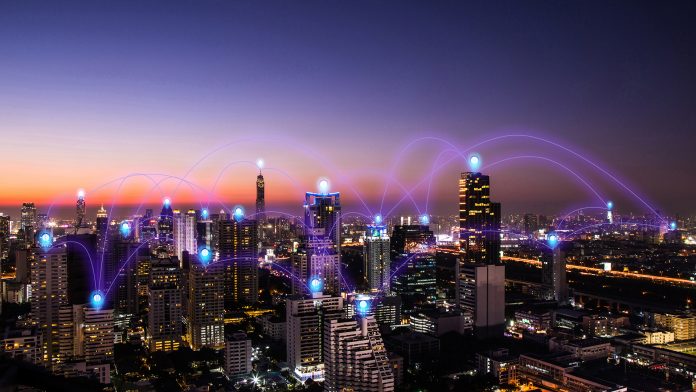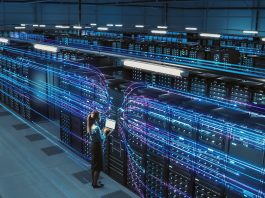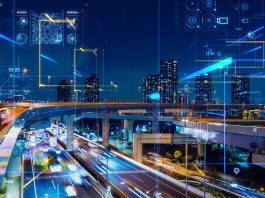Naomi Elia, Public Sector Lead at Juniper Networks UKI, discusses the importance of smart cities, which use technology and data-driven solutions to enhance various aspects of urban life.
Smart cities use technology and data-driven solutions to enhance residents’ quality of life, improve the efficiency of urban operations and address issues such as traffic congestion, pollution, and public safety.
The definition is broad – and for good reason. After all, technology is constantly changing, and cities have diverse needs that can shift over time. As a result, becoming a smart city is typically a journey rather than a destination.
But whatever the precise definition, smart cities are on the rise. Now, many local governments are adopting – and reaping the rewards of – smart technologies.
Enhancing Wi-Fi for the community
Robust and effective Wi-Fi networks are essential if a local government wants to build a smart city, town, or region.
Hertfordshire County Council, UK, recently upgraded its Wi-Fi infrastructure in over 300 government offices and community hubs. While public internet access had long been available in libraries, social centres and other community hubs, the slow wireless LAN was not fit for expanded community engagement objectives.
Choosing a network with robust AI capabilities has helped Hertfordshire County Council deliver reliable, predictable, and measurable network user experiences. Now, the county’s Wi-Fi is secure and easy to manage, and the improved connectivity is benefiting the community by encouraging residents to use public spaces and fostering a sense of togetherness.
The council’s staff is also benefiting – with faster and more secure office Wi-Fi, a hybrid working style is fully supported. Additionally, the network’s cloud architecture and AI capabilities help the team access the right data.
Roadblocks have been minimal. In fact, the deployment resulted in zero network-related trouble tickets. A virtual AI assistant has also proven instrumental in diagnosing and resolving issues, providing real-time insights in a user-friendly manner.
If and when Hertfordshire County Council wants to adopt other smart technologies, it will have the foundational infrastructure ready to be built upon.

A city with intelligent infrastructure
Las Vegas, US, has taken things further – and now serves as a prime example of a smart city. By deploying the largest private 5G network in the country, alongside the Internet of Things and automation technologies, the city’s connectivity now serves the government, public schools and tourism.
Thanks to the city’s smart infrastructure, both residents and visitors benefit from smart street lighting, real-time crime data, and stronger autonomous vehicle safety systems. The network is also future-ready: what comes next is up to the city government, and the options for innovation are almost countless.
There are many options for innovation. For example, many cities use smart traffic lights. These are designed to reduce congestion, cut waiting times, and bolster safety. Equipped with sensors and cameras, they can detect the presence of vehicles, pedestrians, and cyclists at intersections.
Their built-in connectivity then allows them to communicate with a central traffic management system, and the signal timings can be optimised and easily adjusted based on time of day and day of the week patterns. Citizens can really benefit from these lights, as they minimise frustrating delays and promote smoother, quicker traffic flows, which in turn contribute to lower fuel consumption, reduced emissions, and improved productivity.
Elsewhere, a number of towns and cities (for example, Manchester and Croydon) are using sensors to detect footfall throughout the year. This monitoring can highlight over- and under-utilised areas of a city – information that can allow city planners to reassess the purpose of a certain area or highlight areas prone to overcrowding.
Additionally, some cities are leveraging smart EV charging stations. Equipped with sensors, these can collect data on usage patterns, energy consumption and peak demand. City planners can then use this data to optimise charging station locations and manage energy resources more efficiently.
Smart solutions are usually city-specific – and this is important. After all, no two cities are the same. One city may be in dire need of better traffic management.
Another might want to connect communities or reduce crime. The most important thing is to take a tailored approach and avoid one-size-fits-all thinking (but be inspired by other examples and how the right AI networking technology can deliver outstanding innovation).
By understanding specific requirements, local governments can leverage technology to deliver meaningful outcomes.
Smart future, smart present
While certain elements of smart city infrastructure may seem futuristic, they belong to the here and now. Thanks to 5G, AI and rapid, effective data analytics, communities around the world can leverage smart technologies sooner rather than later.
These advancements not only promise increased efficiency, sustainability and connectivity but also pave the way for more innovative solutions to address the evolving, dynamic and far-reaching needs of cities and citizens today.









